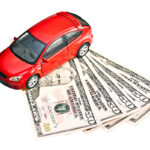Car use appears to have leveled off and even started falling in many of the world’s advanced economies long before the global downturn in 2008, according to transport experts.
The slowdown brings to an end several decades in which car use grew roughly twice as fast as real GDP and incomes.
The trend is consistent across the United States, Britain, France, Japan, Italy, Belgium, Germany, Sweden, the Netherlands and even Australia.
Plateauing car use in much of North America, Western Europe and developed Asia leaves the future of oil demand dependent on motorists in emerging markets.
“The economic recession and relatively high fuel prices explain part of the decline in the growth of travel but not all of it,” according to a report by the International Transport Forum (ITF) of the Organization for Economic Co-operation and Development’s (OECD) titled “Long Run Trends in Car Use.”
The reasons are complex and may vary from country to country. There is still considerable uncertainty about why car use among young adults is falling so rapidly, and whether it represents a voluntary change in lifestyle, a response to tough economic conditions, or the increased availability of alternatives such as public transport and the Internet.
“Slowing population growth, population aging and increasing urbanization contribute to the change in passenger use in several countries,” according to the forum. “There is evidence that car use has also been reduced through policy intervention, particularly in urban areas.”
The downturn is not even. “Car use … among young adults (men in particular) has declined in several countries in recent years,” the ITF added in the report published last year.
Mobility may also be declining across other modes of transport as well.
In 2012, the average person in Britain traveled 6,691 miles, 4 percent lower than the annual average between 1995 and 1997, according to Britain’s Department of Transport (“National Travel Survey 2012”).
The number of trips by private transport was down by 14 percent, while the number by some form of public transport was up 2 percent.
FUEL PRICES, INTERNET
Fuel costs are clearly a factor in many countries. Crude oil prices have quadrupled since the turn of the century. The rise in pump prices for gasoline and diesel has been proportionately smaller because of taxes. Nonetheless, driving has become significantly more expensive.
Unsurprisingly, as travel becomes more expensive, households are traveling less and choosing more efficient modes of transport. Something similar was observed in the 1970s and early 1980s in response to the first two oil shocks.
Demographics also play a part. Annual miles driven decline by around half when an individual retires. As populations of advanced economies grow older, per capita car use is falling.
But driving is also responding to other more complex social changes. The rise of mobile computing, smartphones, more single-person households, the trend to start families later, more young people living in central urban areas and “changing images of contemporary life” could all be reducing car use, according to Phil Goodwin at the University of the West of England’s Centre for Transport and Society.
He thinks some of the social status and self-identification invested in the car has been transferred to the smartphone. “I love my car” has become “I love my smartphone,” Goodwin argued in a thoughtful 2012 conference paper entitled “Peak car. Where did the idea come from? And where is it going?”
Certainly the rise of online shopping and social networking may have replaced some shopping trips and leisure travel. “Survey evidence supports the view that technology and social media are seen as substitutes for physical travel, particularly among the young,” according to the ITF.
“The largest decline in car travel is for shopping and visiting friends and relatives,” it says, “which some see suggestive of a change induced by choice (perhaps facilitated by the rising availability of online alternatives to travel) but which could also be the result of tighter budget constraints”.
COMPANY CARS, YOUNG MEN
The downturn in driving is not uniform and is heavily concentrated in certain social groups. In Britain, for example, the downturn has been sharpest in London, where the high cost of insurance and parking, as well as congestion charging and a dense public transport network have all combined to reduce driving since around 2000.
In the mid-1990s, cars accounted for 50 percent of all journeys within the capital but that has now fallen to less than 40 percent, said David Metz at University College London’s Centre for Transport Studies (“The future of the car”).
In Britain as a whole, the driving downturn since 1997 is entirely explained by less driving among males aged under 50.
For men aged between 30 and 50, declining company car use can explain the entire leveling off in driving since the 1990s, said the ITF, which attributes it to less-favorable fiscal treatment for fuel used in company-owned vehicles.
For younger men, aged 20 to 29, access to company cars is limited and most of the decline is down to less use of private vehicles. Their car travel has declined by a massive 1,800 miles per year each on average since 1997.
“Half of the decline (among young males) is due to fewer people driving, and half to reduced mileage by drivers. About one-third of the decline is for trips to visit friends and relatives,” ITF says.
It remains unclear how much of this downturn is the result of a positive choice to adopt a different lifestyle, and how much is being compelled by increasing economic hardship and the costs of owning and running a car.
But the downturn in London and among company car owners suggest deliberate policy choices, such as congestion charging and increasing fuel taxes, can have a large impact.
DEVELOPING ECONOMIES
The fact the downturn began long before the recession in at least some of the advanced economies suggests there has been a structural break in driving behavior. If true, driving growth will not revert to its previous long-term trend (growing twice as fast as GDP).
In developing economies, however, car use will continue to rise. “The rule of thumb that mobility and in particular car use will develop in line with GDP as long as policies do not point strongly in the opposite direction, remains broadly applicable,” according to the ITF.
“Population growth and rural migration to the cities where motorization is often twice that of rural areas due to higher incomes, will induce pressure towards greater mobilization,” the forum concluded.
Deliberate transport policies “could induce leveling off of car use at lower per capita use volumes than are observed in currently high-income countries,” it said. But it will take more than just providing cheap and reliable public transport. As the example of the advanced economies shows, policymakers would need to adopt policies that deter car use.
(The author would like to thank several of those who commented on FTAlphaville’s post on “Peak car?” Jan 17, 2014, for some of the references used in this article.)
(Editing by Pravin Char)





















 Blacks and Hispanics Pay More for Auto Insurance. Study Tries to Answer Why.
Blacks and Hispanics Pay More for Auto Insurance. Study Tries to Answer Why.  Commercial Lines Profit Growth: Execution Matters More Than Portfolio Mix
Commercial Lines Profit Growth: Execution Matters More Than Portfolio Mix  Allstate October Catastrophe Losses of $286M Include Milton, Helene
Allstate October Catastrophe Losses of $286M Include Milton, Helene  Bumps Ahead as Disruption Drives Changes in Auto Insurance
Bumps Ahead as Disruption Drives Changes in Auto Insurance 